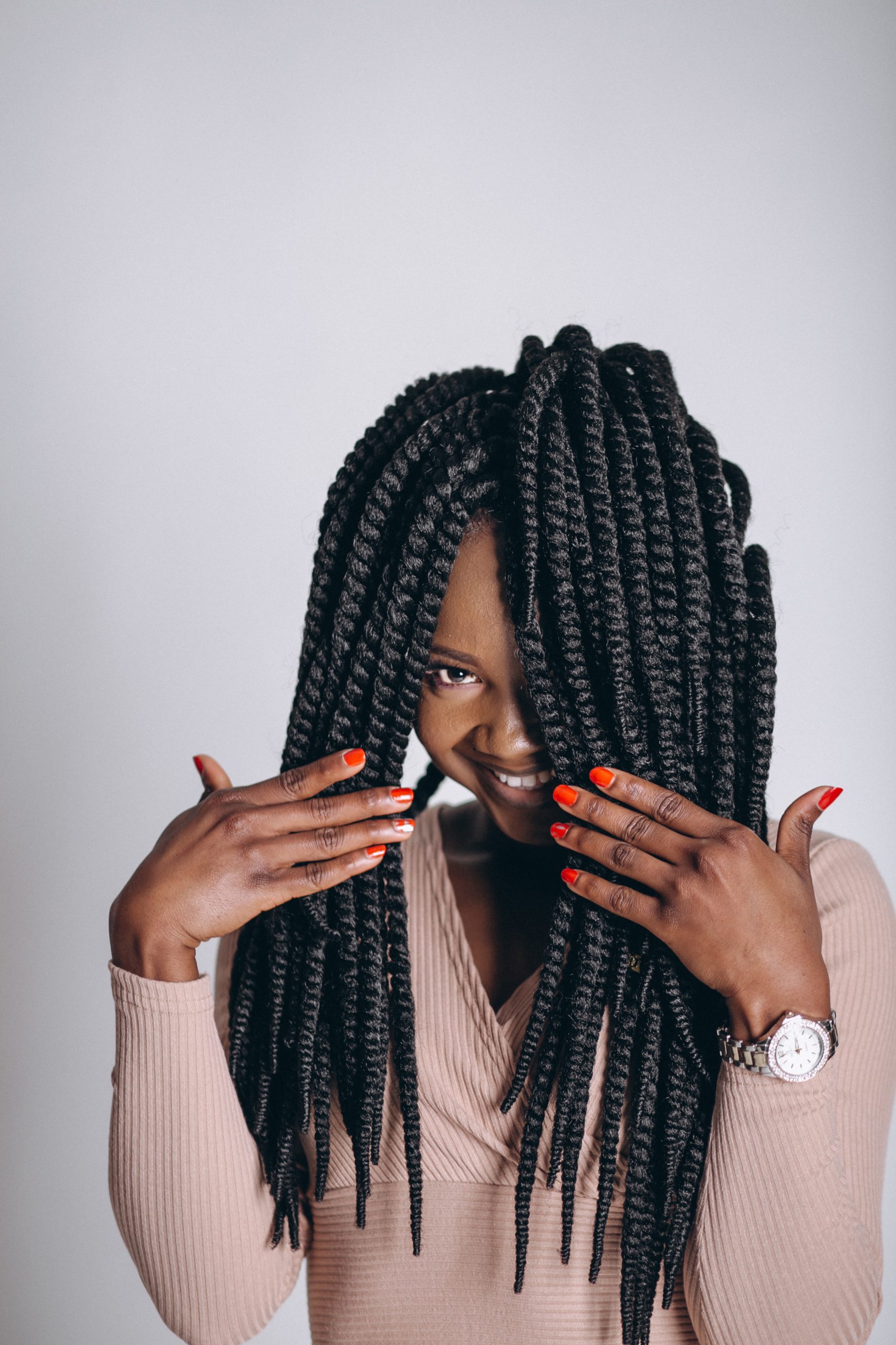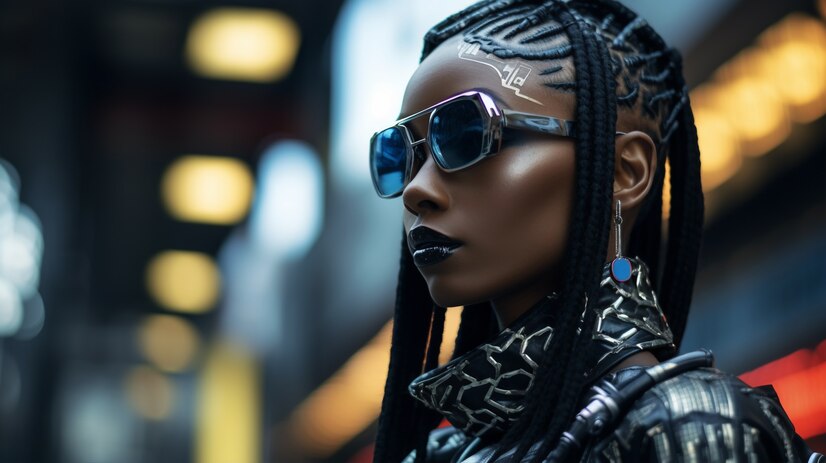Braids in South Africa: A Cultural and Stylistic Journey
Introduction
Braiding, a hairstyling technique that involves interweaving hair strands, holds a special place in the hearts of many South Africans. It’s not just a means of hair adornment but a reflection of cultural identity, personal expression, and a powerful social and historical symbol. To understand the significance of braids in South Africa, we’ll delve into its history, cultural importance, and modern interpretations.
A Historical Perspective
Braiding in South Africa has a rich and diverse history that is deeply intertwined with the nation’s complex past. Different ethnic groups and communities have their unique braiding traditions, each with its own stories and symbolism. Let’s take a closer look at how history has shaped the art of braiding in South Africa.
Indigenous Traditions
For many South African indigenous communities, such as the Zulu, Xhosa, and Ndebele, the art of intricate braiding has been an integral part of their cultural heritage for centuries. These braiding traditions run deep, encompassing a myriad of techniques and designs that serve as markers of tribal and familial identity. The act of braiding hair within these communities goes far beyond aesthetics; it is a powerful means of expressing one’s cultural affiliation and heritage.
Within these traditions, every braid tells a story. The intricate patterns and designs convey specific meanings within the community. For instance, the style of braiding can indicate an individual’s age, marital status, and social role within the community. This practice fosters a strong sense of belonging, where members of these indigenous groups can instantly recognize one another’s affiliations based on their braided hairstyles. It creates a visual language that transcends spoken words and connects people through shared cultural heritage. The braids are a source of pride, a link to their ancestors, and a testament to the rich traditions of their communities.
Colonial Influence
The colonial era brought profound changes to South Africa, including the imposition of European standards of beauty and grooming. Eurocentric ideals often favored straight hair, and this preference became deeply ingrained in societal norms. South Africans found themselves confronted with these foreign standards that often led to discrimination against natural African hair. The impact of this colonial influence on braiding practices was significant.
In response to these imposed standards, many South Africans began to chemically straighten their hair, adopting styles that conformed to Eurocentric ideals. This transformation was not merely a cosmetic change; it was a reflection of the social dynamics that were unfolding under colonial rule. People felt the need to assimilate into these imposed norms to gain acceptance and avoid discrimination.
As South Africa moved further into the colonial era, these beauty standards and their impact on braiding practices became deeply ingrained in the cultural fabric of the nation. This historical influence continues to shape the way South Africans view and engage with their hair, revealing the complexities of identity, culture, and resistance in the face of colonial pressures.
Resistance and Cultural Revival
The history of South Africa is marked by numerous struggles and resistance movements against the injustices of apartheid and colonialism. In this complex and challenging environment, hairstyles became a powerful means of expression and a symbol of resistance. Braiding, in particular, played a significant role in this context, as it allowed South Africans to reclaim their cultural identity and resist the oppressive forces that sought to erode it.
Throughout the apartheid era, when the black population of South Africa faced systemic discrimination, segregation, and violence, hairstyles like Afros and cornrows emerged as powerful symbols of black pride and identity. These hairstyles defied the European standards imposed during the colonial period and reclaimed the authenticity and beauty of natural African hair. Braiding, in particular, was embraced as an emblem of resistance.
Braiding served as a silent but potent form of protest. Black South Africans reclaimed their cultural practices by openly embracing braids that honored their diverse tribal backgrounds. By doing so, they sent a clear message that their cultural heritage was not only resilient but also thriving. Braids celebrated their identity, ethnicity, and the shared experiences of their communities.
In this context, the act of braiding was not merely about aesthetics; it was a demonstration of resilience, pride, and unity. The braided hairstyles served as a source of empowerment, standing in defiance of the oppressive forces that attempted to suppress their cultural identity. The resilience of braiding and its role in preserving and celebrating South African cultural heritage became a testament to the strength and unwavering spirit of the nation during one of its most challenging periods. It exemplified the power of culture and identity in the face of adversity.
The Cultural Significance
Braiding holds deep cultural significance in South Africa, reflecting a sense of belonging and heritage. It is not merely a matter of aesthetics but serves as a powerful symbol of identity, community, and individual expression.
Identity and Belonging
In the rich tapestry of South African culture, braiding holds a unique place as a visible marker of cultural and ethnic identity. The intricate patterns and designs of braids are not mere aesthetic choices; they carry deep-rooted meanings within the community. For many South Africans, braids are a way to proudly display their tribe, age, marital status, and even personal achievements. This practice fosters a profound sense of belonging and connection to one’s roots.
In South Africa, where diverse ethnic groups coexist, the braiding styles can serve as a form of non-verbal communication, allowing individuals to express their cultural heritage and background. The choice of braiding patterns can be a source of pride and a way to celebrate one’s unique identity within the broader South African society. In this sense, braids are more than just a hairstyle; they are a testament to the rich cultural diversity that defines the nation
Social Bonding
Braiding is not just a solitary grooming ritual; it’s a communal experience deeply embedded in South African culture. The act of braiding brings people together, as family members and friends gather to create intricate styles. These braiding sessions extend beyond mere hairstyling; they are accompanied by the sharing of stories, singing, and the transmission of oral traditions. This communal aspect of braiding plays a crucial role in forging and strengthening social bonds.
As braiding unfolds, it often becomes a space for intergenerational knowledge transfer. Elders pass down not only the technical skills of braiding but also the cultural stories, wisdom, and values that have been preserved for generations. These sessions provide an opportunity for younger generations to learn about their cultural heritage and the significance of braiding in South African society.
Individual Expression
While braids are deeply rooted in cultural and social traditions, they also serve as a canvas for individual expression. People make choices about their braiding styles based on personal preferences, fashion trends, and even to convey political or social statements. In recent years, braids and natural hair have experienced a resurgence, representing symbols of pride and self-acceptance.
Individuals can express their uniqueness through their choice of braiding styles, showcasing creativity and personal aesthetics. This form of self-expression is particularly powerful in a diverse and multicultural country like South Africa, where personal identity often intersects with complex layers of culture and ethnicity. Braids can be a way to assert one’s individuality while also being a part of a broader cultural tapestry. Whether it’s choosing bold and colorful designs or opting for simpler, classic styles, individuals make braiding a reflection of their personal journeys and identities.
Modern Interpretations
In contemporary South Africa, braids have evolved to encompass a wide range of styles and interpretations. From traditional tribal designs to modern, innovative approaches, the art of braiding continues to thrive.
Protective Styling
Braids have gained significant popularity in South Africa and beyond as a protective styling option, especially for individuals with natural hair. The appeal of braids lies in their capacity to offer a respite from constant hair manipulation and heat styling, which can lead to hair damage. Braids effectively help retain hair length by minimizing breakage and tangling, allowing for healthier hair growth. For South African women and men, choosing braids isn’t just a fashion statement; it’s a practical choice to protect the integrity of their hair.
This protective aspect of braiding is particularly important in a climate where natural hair is celebrated. It aligns with the broader movement of embracing natural textures and reducing reliance on harsh chemicals and heat treatments. Beyond being a matter of style, braids are a commitment to maintaining the health and strength of one’s hair, an important consideration in a nation where hair care is deeply intertwined with cultural identity.
Fashion and Trends
Braids have seamlessly transcended traditional boundaries, evolving into a global fashion statement. In South Africa, this evolution is evident in the proliferation of trendy styles such as box braids, feed-in braids, and faux locs. These styles are not only protective but have also become synonymous with high fashion and elegance. They adorn the heads of South Africans with a sense of confidence, grace, and style.
Braids are no longer confined to a single purpose; they’ve become versatile expressions of individuality. South African fashion enthusiasts have embraced these styles not just for their practical benefits but also for their aesthetics. Braids are celebrated for their ability to frame the face beautifully, serving as an accessory that complements various outfits and occasions. As such, braids represent a perfect blend of form and function, embodying the marriage of style and substance.
Cultural Revival
There’s a powerful resurgence of interest in embracing traditional African braiding styles in South Africa. Many individuals are turning to their roots, using their hair as a canvas to celebrate their cultural heritage. This revival represents more than just a fashion trend; it’s a cultural and social movement that promotes pride in African identity.
South Africans, especially the younger generations, are exploring and embracing traditional braiding techniques that have been passed down through the ages. By doing so, they are acknowledging the historical significance of these practices and their deep connections to tribal, familial, and societal identities. This cultural revival extends beyond hair; it’s an affirmation of the values, beliefs, and customs that have shaped South African communities.
The act of braiding is an opportunity to reconnect with and revitalize cultural heritage. For many South Africans, it’s a way to say, “I am proud of who I am and where I come from.” This movement represents a powerful shift toward cultural preservation and self-empowerment, where hair serves as a tangible symbol of cultural revival and heritage.
Challenges and Controversies
While braids continue to be celebrated and embraced in South Africa, there are also challenges and controversies surrounding them. These issues reflect broader social and cultural dynamics.
Discrimination and Stereotyping: Discrimination against natural African hair and braiding styles is an ongoing issue. Many South Africans have experienced discrimination in schools, workplaces, and even in social settings due to their choice of hairstyle. This has led to discussions about cultural acceptance and equality.
Appropriation and Commercialization: The commercialization of braids has raised concerns about cultural appropriation. While they are celebrated as a fashion statement worldwide, some argue that the deeper cultural meanings and significance of braids are often overlooked or exploited for profit.
Legislation and Education: In response to these issues, South Africa has seen efforts to address hair discrimination and promote inclusive policies. Some schools and workplaces have introduced policies to allow natural hairstyles, and educational campaigns have been launched to raise awareness about cultural sensitivity and appreciation.
Conclusion
Braids in South Africa are far more than a hairstyle; they are an embodiment of cultural identity, a reflection of history, and a symbol of resistance and pride. In the face of adversity, South Africans have used braiding as a means of asserting their identity and celebrating their heritage. As the art of braiding continues to evolve and adapt to modern contexts, it remains a powerful and unifying cultural force in the nation’s social fabric.


